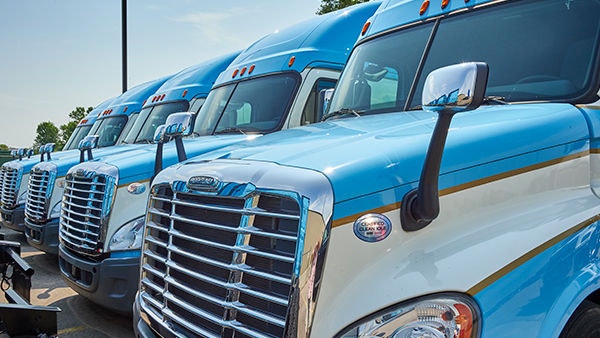New 2025 Out-of-Service Criteria Now in Effect: What You Need to Know
May 28, 2025

The Commercial Vehicle Safety Alliance (CVSA) has officially implemented the 2025 edition of the North American Standard Out-of-Service Criteria (OOSC), effective April 1, 2025. This crucial update outlines the violations that will result in a driver or vehicle being placed out of service (OOS) during a roadside inspection.
The OOSC serves as the standard enforcement tool for inspectors throughout North America. When a violation is discovered, the criteria help determine whether the condition poses an imminent hazard. If so, the driver or vehicle must remain off the road until the violation is corrected, making compliance with these updated rules vital for every motor carrier and commercial driver.
Let’s break down the key changes in the 2025 OOSC that fleets and drivers should be aware of.
Driver-Related Updates
1. Medical Certification Enforcement Tightened
All drivers operating without a valid medical certificate will now be placed out of service under section 391.41. Previously, property-carrying drivers without a medical certificate — but with no history of operating without one — were sometimes allowed to continue driving. This change closes that loophole and holds all drivers to a stricter standard. To avoid disruptions, carriers must ensure that every driver has a current and valid proof of medical certification on file. For a CDL driver, proof is their MVR after each medical exam. For a non-CDL driver, each new medical certificate is proof.
2. CLP Supervision Requirements
Drivers holding a Commercial Learner’s Permit (CLP) must be supervised by someone fully qualified to operate the same type of vehicle. If the supervising driver doesn’t meet those qualifications, the CLP holder will now be placed out of service under section 383.25. This ensures that learners are properly monitored and that training occurs under safe and compliant conditions.
Vehicle-Related Updates
1. Clarification on Trailer Brake Violations
In cases where trailer brakes are inoperative due to a disconnected electrical connector, the vehicle will now be placed out of service and cited with one violation. This is a clarification from previous practices where inspectors might have issued multiple violations — one for each non-functioning brake. This update provides consistency in enforcement and better reflects the root cause of the issue.
2. Tire Sidewall Leaks Now Grounds for OOS
Vehicles with a leaking tire sidewall will now be placed out of service under section 393.75, even if equipped with an automatic tire inflation system that compensates for the leak. This underscores the importance of regular tire inspections, as sidewall damage represents a serious safety risk, regardless of inflation support systems.
What This Means for Carriers
These changes are designed to improve highway safety and ensure consistent enforcement across North America. Carriers should take proactive steps to:
- Review and update their compliance and training programs.
- Verify that all drivers have current medical certificates.
- Confirm CLP supervision meets updated standards.
- Inspect trailers and tires regularly to prevent costly downtime.
By staying current with the 2025 OOSC, carriers can reduce their risk of violations, avoid out-of-service orders, and help ensure safer roads for everyone.